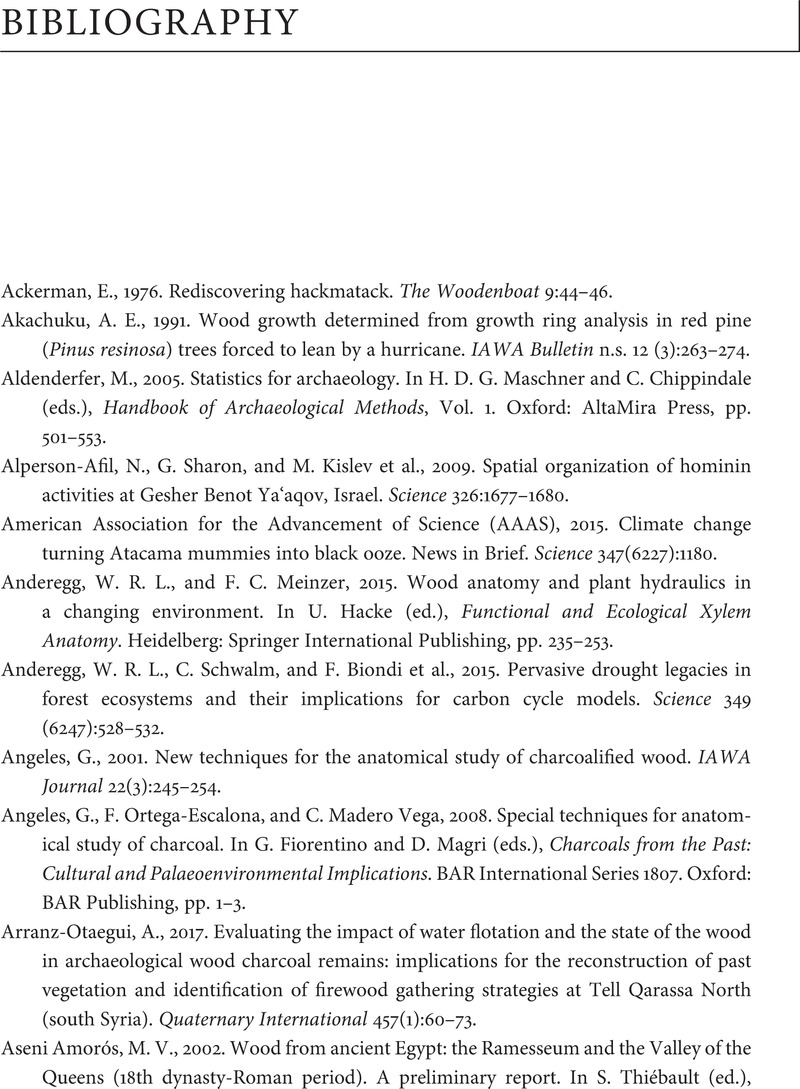Book contents
- Wood in Archaeology
- Cambridge Manuals in Archaeology
- Wood in Archaeology
- Copyright page
- Dedication
- Contents
- Plates
- Figures
- Tables
- Preface
- Acknowledgments
- 1 Introduction
- 2 Archaeological Wood
- 3 Woody Plants
- 4 Wood Anatomy Basics
- 5 Working with Archaeological Wood
- 6 Working with Archaeological Wood
- Book part
- Bibliography
- Index
- References
Bibliography
Published online by Cambridge University Press: 02 April 2022
- Wood in Archaeology
- Cambridge Manuals in Archaeology
- Wood in Archaeology
- Copyright page
- Dedication
- Contents
- Plates
- Figures
- Tables
- Preface
- Acknowledgments
- 1 Introduction
- 2 Archaeological Wood
- 3 Woody Plants
- 4 Wood Anatomy Basics
- 5 Working with Archaeological Wood
- 6 Working with Archaeological Wood
- Book part
- Bibliography
- Index
- References
Summary

- Type
- Chapter
- Information
- Wood in Archaeology , pp. 276 - 317Publisher: Cambridge University PressPrint publication year: 2022

